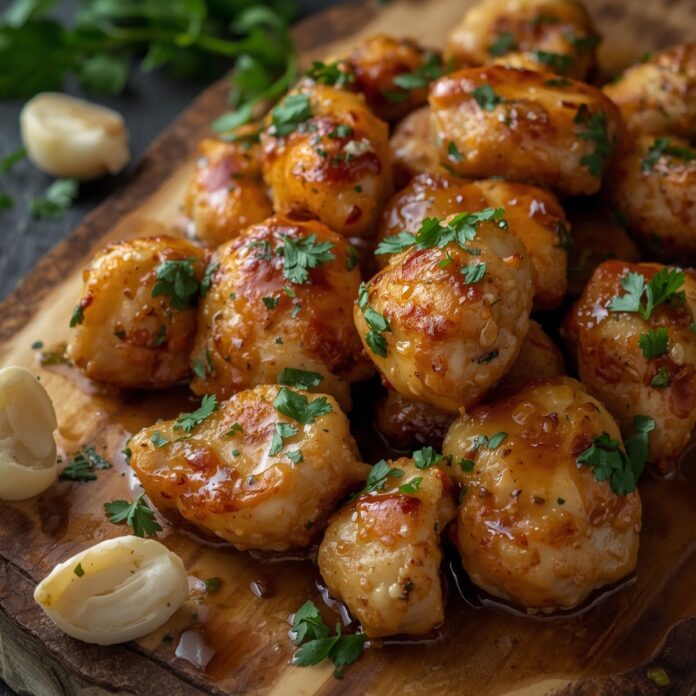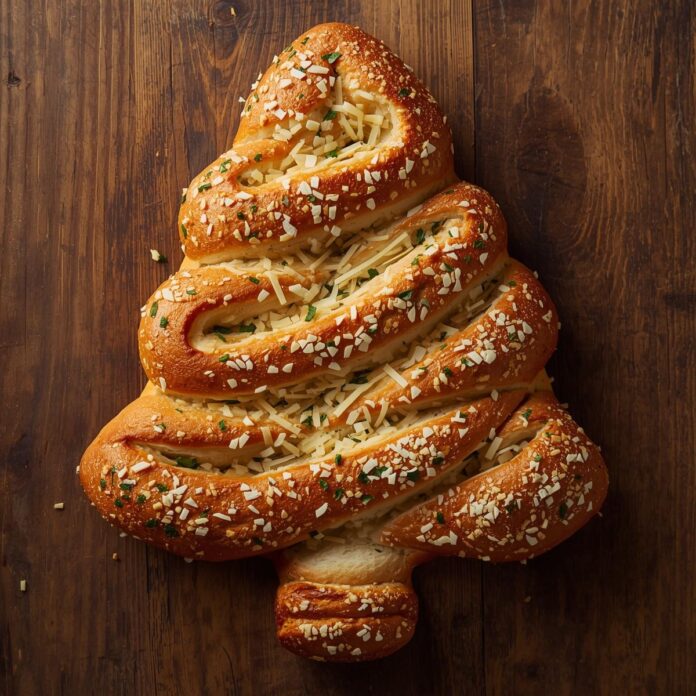There are few dishes that capture the soul of comfort food as gracefully as a bowl of pasta coated in a creamy, tangy tomato and ricotta sauce. It is a marriage of two culinary traditions: the rustic simplicity of Italian tomato-based sauces and the delicate creaminess of ricotta cheese, a staple ingredient in countless Mediterranean kitchens. Tomato Ricotta Pasta exemplifies balance — the acidity of ripe tomatoes meeting the mild sweetness and velvety texture of ricotta, resulting in a sauce that feels both light and indulgent.

The beauty of this dish lies in its versatility. Whether it’s prepared for a quick weeknight meal or served as the centerpiece of a leisurely Sunday dinner, it adapts effortlessly to the occasion. In Italian households, pasta dishes like this one are not merely recipes — they are a continuation of tradition, shaped by generations of cooks who learned to transform humble ingredients into something extraordinary. The Tomato Ricotta Pasta carries with it a whisper of that heritage: the aroma of simmering tomatoes, the silky swirl of cheese melting into sauce, the comforting sound of pasta water bubbling on the stove.
Historically, tomato-based pasta sauces gained prominence in Southern Italy, particularly in regions like Campania and Sicily, where tomatoes thrived in the warm Mediterranean climate. Ricotta, on the other hand, found its roots in pastoral regions across the Italian peninsula. Traditionally made from the whey left behind after cheese-making, ricotta embodies the Italian philosophy of cucina povera — the art of creating abundance out of simplicity. When combined, these two ingredients create a dish that reflects both the agricultural richness and the resourceful ingenuity of Italian cuisine.
What makes Tomato Ricotta Pasta particularly special is its harmony of flavors and textures. The tomatoes provide brightness and acidity, the ricotta offers creaminess without heaviness, and the pasta acts as a vessel that binds it all together. It is a dish that invites personalization: a pinch of chili for heat, a handful of basil for fragrance, or a drizzle of olive oil for depth. Its foundation is simple enough for beginners, yet nuanced enough to reward experienced cooks who wish to experiment with different variations.
Beyond the kitchen, this recipe embodies a sense of togetherness. Pasta meals, in Italian culture and beyond, are communal experiences. They are meant to be shared — among family, friends, or anyone who appreciates the act of eating as an expression of care. Tomato Ricotta Pasta, in its modest yet deeply satisfying nature, is an ideal dish for such gatherings. It speaks a universal culinary language of warmth, nourishment, and joy.
In this recipe guide, we will explore every aspect of crafting the perfect Tomato Ricotta Pasta — from selecting the right type of tomatoes and pasta shape to mastering the sauce’s texture and balance. We will delve into the techniques that elevate this seemingly simple dish into a restaurant-quality meal. Along the way, you will find insights into ingredient sourcing, traditional Italian cooking principles, and practical adjustments for different dietary preferences.
By the end of this comprehensive guide, you will not only have a step-by-step recipe but also an understanding of the artistry behind it — how flavors develop, how textures interact, and how a few basic ingredients can be transformed into something extraordinary. Whether you’re cooking for one, feeding a family, or preparing to impress guests at a dinner party, this Tomato Ricotta Pasta recipe promises satisfaction, elegance, and the timeless comfort of a dish crafted with care.
Detailed Instructions for Tomato Ricotta Pasta
Step 1: Gather and Prepare Your Ingredients
Before you begin cooking, it is essential to have every ingredient measured, prepped, and within arm’s reach. This practice, known as mise en place, ensures efficiency and minimizes stress while cooking. For this recipe, you will need:
-
Pasta: 400 grams (about 14 ounces) of short pasta such as rigatoni, penne, or fusilli. These shapes hold the creamy sauce exceptionally well due to their ridges and hollow centers.
-
Tomatoes: 500 grams (about 1 pound) of ripe tomatoes. You can use fresh plum or Roma tomatoes for a bright, summery flavor, or high-quality canned whole tomatoes for convenience and consistency.
-
Ricotta cheese: 250 grams (1 cup) of whole-milk ricotta. Fresh ricotta yields the best texture and flavor.
-
Olive oil: 3 tablespoons of extra-virgin olive oil for sautéing and finishing.
-
Garlic: 3–4 cloves, finely minced or thinly sliced.
-
Onion: 1 small yellow onion, finely chopped to provide sweetness and depth.
-
Salt: To taste, ideally sea salt or kosher salt for better mineral balance.
-
Black pepper: Freshly ground, for seasoning.
-
Fresh basil: A handful of leaves, torn or chopped.
-
Optional additions: A pinch of red pepper flakes for heat, a touch of sugar if your tomatoes are overly acidic, and grated Parmesan or Pecorino for serving.
Prepare all ingredients before you turn on the stove. Dice the onions uniformly for even cooking, mince the garlic carefully to prevent burning, and if using fresh tomatoes, score the skins with a small “X” at the bottom and blanch them in boiling water for 30 seconds. Transfer to ice water, peel, and roughly chop. This ensures a smoother sauce texture.
Step 2: Cook the Pasta
-
Boil water: Fill a large pot with water — at least 4 liters for 400 grams of pasta — to allow the noodles to move freely as they cook. Bring it to a rolling boil over high heat.
-
Season generously: Once boiling, add salt. A good rule of thumb is about 1 tablespoon of salt per liter of water. The water should taste “like the sea.” This is the only chance to season the pasta itself.
-
Add the pasta: Stir immediately after adding it to prevent sticking. Cook according to the package directions until al dente — typically one to two minutes less than the recommended time.
-
Reserve pasta water: Before draining, scoop out about 1 cup of the starchy cooking water. This liquid will later help emulsify the sauce and bind it to the pasta.
-
Drain carefully: Do not rinse the pasta. The starch clinging to the noodles will help the sauce adhere better.
Step 3: Build the Tomato Base
-
Heat olive oil: In a large skillet or sauté pan, warm 3 tablespoons of olive oil over medium heat. The pan should be wide enough to eventually hold both the sauce and pasta.
-
Sauté the aromatics: Add the chopped onion and cook gently for 5–7 minutes, stirring occasionally, until it becomes translucent and fragrant. Avoid browning; you want the onion to soften and release its sweetness.
-
Add garlic: Stir in the minced or sliced garlic and cook for about 30 seconds to 1 minute — just until aromatic. Overcooking garlic will make it bitter, so watch closely.
-
Incorporate tomatoes: Add the chopped fresh tomatoes or canned whole tomatoes (crushed by hand or with a spoon). Stir well to combine with the aromatics.
-
Season: Add a pinch of salt, a few twists of black pepper, and if desired, a pinch of red pepper flakes for a gentle heat.
-
Simmer: Reduce the heat to medium-low and let the sauce simmer uncovered for 15–20 minutes, stirring occasionally. This allows excess moisture to evaporate and the flavors to concentrate.
-
Adjust consistency: If the sauce thickens too much, add a small splash of the reserved pasta water or a drizzle of olive oil.
As the sauce cooks, it should transform from a watery mixture to a cohesive, glossy blend. The tomatoes will break down naturally, creating a rich base. Taste periodically and adjust salt or sugar depending on acidity.
Step 4: Incorporate the Ricotta
-
Lower the heat: Once the tomato sauce has reached a soft, thick consistency, reduce the heat to low.
-
Add ricotta: Spoon the ricotta cheese into the pan and stir gently until it blends into the tomato sauce. You should see the color shift from bright red to a delicate orange-pink hue.
-
Emulsify: Stir continuously for 2–3 minutes, allowing the ricotta to melt smoothly into the sauce. If the mixture appears too thick, gradually add small amounts of reserved pasta water to loosen it.
-
Balance the flavors: Taste and adjust with salt, black pepper, and optionally, a few torn basil leaves. The sauce should taste balanced — creamy, slightly tangy, and well-seasoned, without overpowering saltiness.
Pro Tip: Avoid boiling the sauce once the ricotta is added. High heat can cause it to curdle or separate. Gentle, consistent stirring over low heat maintains the sauce’s velvety texture.
Step 5: Combine Pasta and Sauce
-
Transfer pasta: Add the cooked pasta directly into the skillet with the sauce. If your pan is too small, transfer both pasta and sauce into a larger mixing bowl.
-
Add pasta water: Pour in about ¼ cup of the reserved pasta water. This starchy liquid helps bind the sauce to the pasta, creating a luxurious coating.
-
Toss to coat: Using tongs or a wooden spoon, toss the pasta thoroughly so that every piece is evenly covered. Continue stirring over low heat for 1–2 minutes. The sauce should cling beautifully to the pasta without pooling at the bottom of the pan.
-
Final touches: Add a drizzle of olive oil for shine and depth of flavor. Stir in a handful of freshly torn basil leaves for freshness.
Step 6: Serve and Garnish
-
Plate the pasta: Use a large serving spoon or tongs to transfer portions into warm bowls or plates. Warming the dishes beforehand helps maintain temperature and presentation.
-
Add garnishes: Sprinkle each serving with freshly grated Parmesan or Pecorino cheese for umami depth. Top with a few basil leaves for aroma and color.
-
Optional drizzle: A light drizzle of extra-virgin olive oil just before serving enhances the richness of the ricotta and adds a finishing touch of fruitiness.
-
Serve immediately: Tomato Ricotta Pasta is best enjoyed hot, while the sauce remains silky and the pasta perfectly tender.
Step 7: Chef’s Variations and Enhancements
While the classic version of Tomato Ricotta Pasta is deeply satisfying, you can personalize it in numerous ways:
-
Roasted Tomato Ricotta Pasta: Roast the tomatoes in the oven before adding them to the sauce for a deeper, caramelized flavor.
-
Spinach or Kale Variation: Stir in a handful of baby spinach or chopped kale at the end of cooking for added nutrition and color.
-
Spicy Version: Add extra red pepper flakes or a spoonful of Calabrian chili paste to give the sauce a fiery kick.
-
Baked Tomato Ricotta Pasta: Transfer the sauced pasta into a baking dish, top with breadcrumbs and cheese, and bake at 190°C (375°F) until golden and bubbling.
-
Herb Variations: Experiment with fresh oregano, thyme, or parsley in place of basil for a different aromatic profile.
Step 8: Pairings and Serving Suggestions
To complete your Tomato Ricotta Pasta meal:
-
Salad pairing: A simple arugula salad dressed with lemon and olive oil balances the richness of the pasta.
-
Bread accompaniment: Serve with warm, crusty bread to soak up any remaining sauce — a hallmark of Italian dining tradition known as fare la scarpetta.
Tomato Ricotta Pasta
There are few dishes that capture the soul of comfort food as gracefully as a bowl of pasta coated in a creamy, tangy tomato and ricotta sauce. It is a marriage of two culinary traditions: the rustic simplicity of Italian tomato-based sauces and the delicate creaminess of ricotta cheese, a staple ingredient in countless Mediterranean kitchens. Tomato Ricotta Pasta exemplifies balance — the acidity of ripe tomatoes meeting the mild sweetness and velvety texture of ricotta, resulting in a sauce that feels both light and indulgent.
Ingredients
- 12 oz (340 g) pasta (penne, rigatoni, or spaghetti)
- 2 tbsp olive oil
- 3 cloves garlic, minced
- 1 small onion, finely chopped
- 1 can (14.5 oz / 400 g) crushed tomatoes (or fresh ripe tomatoes, chopped)
- 1 tbsp tomato paste (optional, for richer flavor)
- 1 tsp dried oregano
- ½ tsp red pepper flakes (optional)
- Salt and black pepper, to taste
- 1 cup (250 g) ricotta cheese
- ¼ cup grated Parmesan cheese (plus extra for serving)
- Fresh basil leaves, chopped (for garnish)
Instructions
Notes
- Ricotta Texture Tip: For an extra smooth sauce, whisk the ricotta before adding it to the skillet.
- Add Greens: Stir in spinach or arugula at the end for color and nutrients.
- Make it Spicy: Increase red pepper flakes or add a touch of chili oil.
- Protein Option: Add cooked chicken, shrimp, or Italian sausage for a heartier meal.



